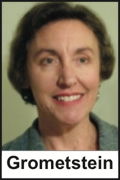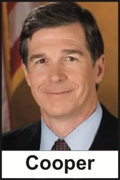Rascals case in brief
In the beginning, in 1989, more than 90 children at the Little Rascals Day Care Center in Edenton, North Carolina, accused a total of 20 adults with 429 instances of sexual abuse over a three-year period. It may have all begun with one parent’s complaint about punishment given her child.
Among the alleged perpetrators: the sheriff and mayor. But prosecutors would charge only Robin Byrum, Darlene Harris, Elizabeth “Betsy” Kelly, Robert “Bob” Kelly, Willard Scott Privott, Shelley Stone and Dawn Wilson – the Edenton 7.
Along with sodomy and beatings, allegations included a baby killed with a handgun, a child being hung upside down from a tree and being set on fire and countless other fantastic incidents involving spaceships, hot air balloons, pirate ships and trained sharks.
By the time prosecutors dropped the last charges in 1997, Little Rascals had become North Carolina’s longest and most costly criminal trial. Prosecutors kept defendants jailed in hopes at least one would turn against their supposed co-conspirators. Remarkably, none did. Another shameful record: Five defendants had to wait longer to face their accusers in court than anyone else in North Carolina history.
Between 1991 and 1997, Ofra Bikel produced three extraordinary episodes on the Little Rascals case for the PBS series “Frontline.” Although “Innocence Lost” did not deter prosecutors, it exposed their tactics and fostered nationwide skepticism and dismay.
With each passing year, the absurdity of the Little Rascals charges has become more obvious. But no admission of error has ever come from prosecutors, police, interviewers or parents. This site is devoted to the issues raised by this case.
On Facebook
Click for earlier Facebook posts archived on this site
Click to go to
Today’s random selection from the Little Rascals Day Care archives….
Click for earlier Facebook posts archived on this site
Click to go to
Today’s random selection from the Little Rascals Day Care archives….
One thing led to another…. boy, did it ever!
 Nov. 16, 2012
Nov. 16, 2012
“In North America in the 1980s, the moral panic about organized child abuse arose in a context that included the following scares:
- “a moral panic about satanic activity;
- “a scare about missing and murdered children;
- “great public anxiety about incest, redefined as child sexual abuse during the 1970s;
- “a wave of disputed custody cases in which women accused their former husbands of sexually abusing children during court-ordered visitations;
- “self-help books by women claiming to be ‘survivors’ of incest and ritual abuse;
- “therapists’ claims that many of their adult women patients suffered from multiple-personality disorder as a result of severe childhood sexual and ritual abuse.
“Of particular importance were claims that society was in denial about widespread child sexual abuse…. Thus, claims about organized child abuse by caregivers were made in a context of claims about similar issues, and the effect of claims in one panic was to reinforce claims in another.”
– From “Wrongful Conviction and the Moral Panic About Organized Child Abuse: National and International Perspectives” by Randall Grometstein (2005)
Working ‘seven days a week’ in wrong direction
Sept. 14, 2012
“Judith Steltzner Abbott of Camden has become a moving force for the well-being of sexually abused children and their families across the state. Her presentations on child sexual abuse have become a part of nursing programs and hospital emergency room staff training and have been presented to law enforcement agencies, social services systems and members of the judiciary.
“When litigation developed from allegations of child sexual abuse at a day care center in a nearby area, Abbott worked seven days a week to provide counseling, guidance and support for children and parents….”
– From Judy Abbott’s citation as winner of the 1992 Distinguished Women of North Carolina Award, Public Service category, sponsored by the North Carolina Council for Women
Not only did the prosecution’s lead therapist avoid penalty for misdiagnosing 17 Little Rascals children, but also she became “a moving force…. across the state” in spreading her toxic mythology – and was honored for it!
Does the North Carolina Council for Women have a process for withdrawing its awards?
MPD renamed DID – but it’s still bunk
May 31, 2013
“After the DSM-III, often called the ‘Bible’ of psychiatric diagnosis, included (Multiple Personality Disorder) in 1980, thousands of spurious cases emerged in the next two decades, and special psychiatric clinics arose to treat them. Yet faced with evidence of this disastrous epidemic, the DSM-IV did not delete the diagnosis. Instead, the manual renamed it Dissociative Identity Disorder.
“ ‘MPD presented a dilemma for me,’ says (psychiatrist Allen Frances, who oversaw DSM-IV). ‘We took scrupulous pains to present both sides of the controversy as fairly and effectively as possible – even though I believed one side was complete bunk.’ How do you ‘fairly’ argue for a diagnosis you think is complete bunk? Where’s the methodological rigor? Why did it take malpractice suits to close the psychiatric MPD clinics and not the presumed voice of scientific authority, the DSM? Dissociative Identity Disorder remains in the DSM-5.”
– From “How Psychiatry Went Crazy” by Carol Tavris in the Wall Street Journal (May 17, 2013)
“Another disturbing by-product of the MPD diagnosis is the prevalence of alleged repressed memories of satanic ritual abuse. The association of satanic ritual abuse in MPD diagnoses has been attributed to the belief by numerous MPD adherents in the existence of an intergenerational satanic cult conspiracy that has murdered thousands without leaving a trace of evidence.”
– From “Repressed Memory, Multiple Personality Disorder and Satanic Ritual Abuse,” an amicus brief filed in Supreme Court of Georgia, Kahout v. Charter Peachford Behavioral Health System (September 1998)
‘Cooper stopped far short of apologizing….’
 Aug. 26, 2013
Aug. 26, 2013
“Attorney General Roy Cooper stopped far short of apologizing to (Greg Taylor and Floyd Brown). He said that the SBI had better investigative practices now and that ‘It was in the best interest of the state to settle these cases.’
“And maybe in the best interest of justice, too?
“These two men lost their youths thanks to agents of the SBI. That is an outrage for which they can never be adequately compensated. State officials have been encouraged to offer profuse apologies, and that is not unreasonable, though it’s a little late for it now….
“But let no one involved in prosecuting these two men believe that the debt for their ‘mistakes’ is paid in full.”
– From “Two former prisoners’ lives, valued,” editorial in the News & Observer (Aug. 15, 2013)
As compensation for their flagrantly corrupted prosecution, Taylor received about $4.5 million from the state, Brown about $8 million. Attorney General Cooper seems to find such an outlay easier to swallow than offering an apology – providing yet another example of the “Mistakes Were Made (But Not By Me)” approach to accountability.
By contrast, in 2007 the Duke lacrosse case moved Cooper to give the defendants a “statement of innocence” and to at least brush up against remorse:
“In the rush to condemn, a community and a state lost the ability to see clearly…. I think a lot of people owe a lot of apologies to a lot of people.”
But in 2009, after yet another wrongful conviction settlement – this one for $3.9 million – Cooper declined to give murder defendant Alan Gell a statement of innocence. ”The Duke case was a clear case, very unusual,” he explained. “There was no crime committed….”
“No crime committed”? Why, I know another “clear case, very unusual” that precisely meets that standard!











0 CommentsComment on Facebook